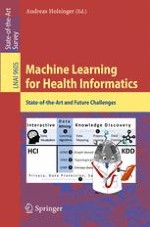2016 | OriginalPaper | Buchkapitel
Network-Guided Biomarker Discovery
verfasst von : Chloé-Agathe Azencott
Erschienen in: Machine Learning for Health Informatics
Aktivieren Sie unsere intelligente Suche, um passende Fachinhalte oder Patente zu finden.
Wählen Sie Textabschnitte aus um mit Künstlicher Intelligenz passenden Patente zu finden. powered by
Markieren Sie Textabschnitte, um KI-gestützt weitere passende Inhalte zu finden. powered by
